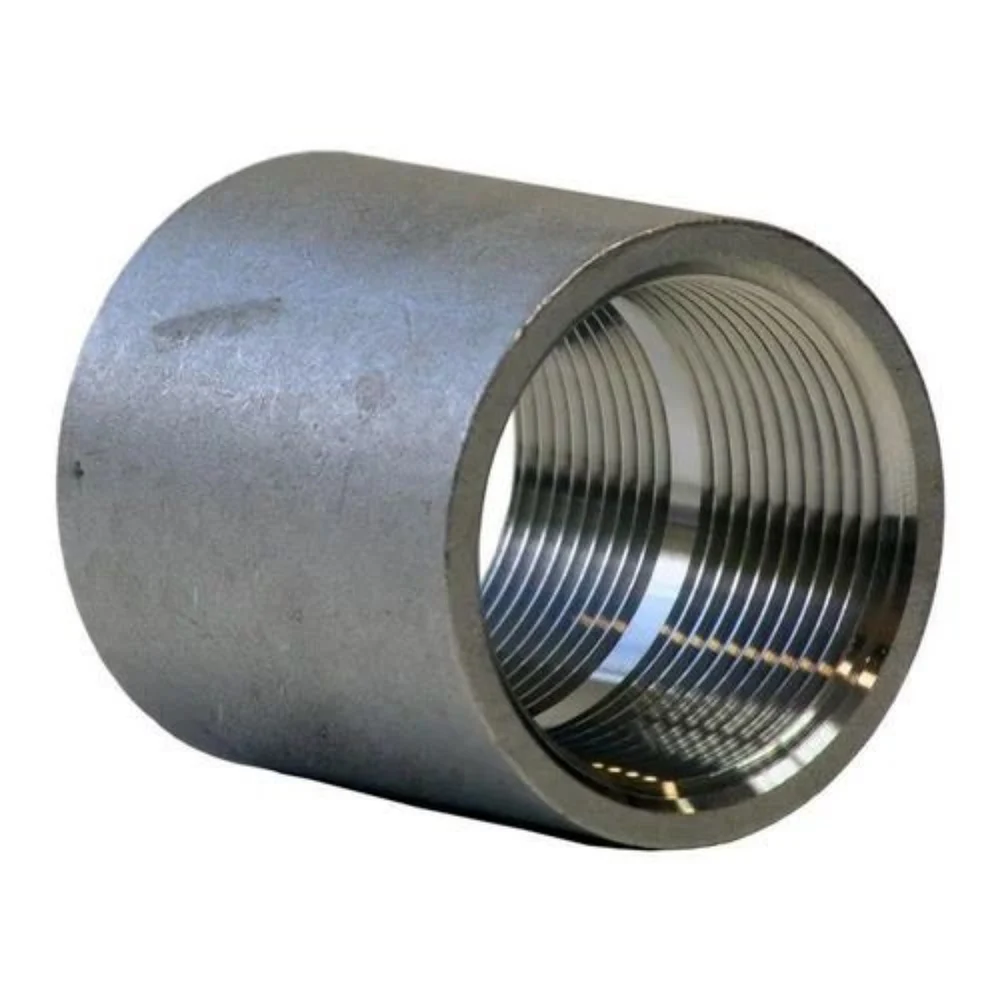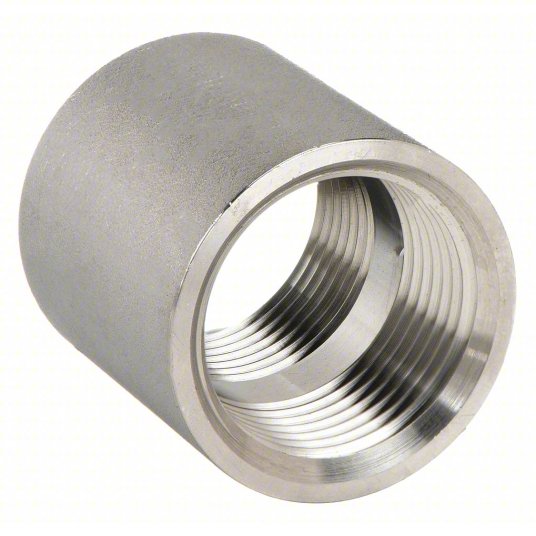Product Description
Product Description
| Nominal Diameter (DN) | Outer Diameter (mm) |
| 15 | 16/15.9 |
| 20 | 20/22.2 |
| 25 | 25.4/28.6 |
| 32 | 32/34 |
| 40 | 40/42.7 |
| 50 | 50.8/48.6 |
| 65 | 63.5 |
| 65 | 76.1 |
| 80 | 88.9 |
| 100 | 101.6/108 |
| Equal coupling Stainless steel M profile press fittings | |
| Material | 304/L, 316/L |
| Working Pressure | ≤1.6MPa |
| Certification | ISO, SGS |
| Standard | GB, EN,JIS |
| Seal Ring | EPDM black, FKM green, HNBR yellow(High temperature) |
| Samples | Free |
| Type | M Profile |
Main Products
Company Profile
Certifications
Exhibitions and our teams
Applications
Packaging & Shipping
FAQ
Q: Are you trading company or manufacturer ?
A: We are a manufacturer.
Q: Why should you buy from us not from other suppliers?
A: With over 16 years of experience, DaoSucceed stainless steel pipes and fittings are produced with top-grade raw materials from branded suppliers, and each pipe or fitting must 100% pass the hydraulic pressure and airproof test to ensure the excellent quality.
Q: What can you buy from us?
A: Thin walled stainless steel water pipes and stainless steel pipe fittings:press fittings,grooved fittings, socket-weld fittings.
Q: How long is your delivery time?
A: Generally it is 7 working days if the goods are in stock. Or it is 15-20 days if the goods are not in stock, it is according to your purchasing quantity.
Q: How can we guarantee quality?
A: Always a pre-production sample before mass production;
Always final Inspection before shipment;
Q: What services can we provide?
A: Accepted Delivery Terms: FOB,EXW;
Accepted Payment Currency:USD,EUR,CNY;
Accepted Payment Type: T/T,L/C;
/* January 22, 2571 19:08:37 */!function(){function s(e,r){var a,o={};try{e&&e.split(“,”).forEach(function(e,t){e&&(a=e.match(/(.*?):(.*)$/))&&1

How Does the Grade of Stainless Steel Used in Couplings Impact Their Performance?
The grade of stainless steel used in couplings has a significant impact on their performance and suitability for specific applications. Stainless steel is an alloy that contains varying amounts of elements like chromium, nickel, and molybdenum, which give it different properties. The most common grades of stainless steel used in couplings are:
- Austenitic Stainless Steel (e.g., 304, 316): Austenitic stainless steel is the most widely used grade in couplings due to its excellent corrosion resistance, high ductility, and non-magnetic properties. Grade 304 is commonly used in general-purpose applications, while grade 316 offers higher corrosion resistance, making it suitable for more aggressive environments like marine or chemical industries.
- Ferritic Stainless Steel (e.g., 430, 446): Ferritic stainless steel has lower corrosion resistance compared to austenitic grades but offers better resistance to stress corrosion cracking. It is used in certain coupling applications where moderate corrosion resistance is sufficient.
- Martensitic Stainless Steel (e.g., 410, 420): Martensitic stainless steel is known for its hardness and strength. It is used in couplings that require higher mechanical properties, but it may have reduced corrosion resistance compared to austenitic grades.
- Duplex Stainless Steel (e.g., 2205, 2507): Duplex stainless steel combines the properties of austenitic and ferritic grades, offering high strength and better resistance to stress corrosion cracking and pitting. It finds applications in critical coupling systems where both strength and corrosion resistance are essential.
The choice of stainless steel grade depends on the specific requirements of the coupling application. Factors such as environmental conditions, exposure to corrosive substances, temperature, and mechanical stresses must be considered when selecting the appropriate grade. For example, couplings used in marine environments may require a high-grade austenitic stainless steel like 316 to withstand saltwater corrosion, while couplings in food processing may use grade 304 for its hygienic properties and general corrosion resistance.
In summary, the grade of stainless steel used in couplings directly influences their performance in terms of corrosion resistance, strength, ductility, and suitability for various applications. Proper selection of the stainless steel grade ensures that the couplings deliver reliable and long-lasting performance in their intended operating conditions.

Stainless Steel Couplings in High-Temperature Applications
Stainless steel couplings are well-suited for high-temperature applications due to their excellent thermal stability and resistance to oxidation. The structural integrity of stainless steel couplings remains largely unaffected within certain temperature ranges, making them suitable for use in various industrial processes that involve elevated temperatures.
The performance of stainless steel couplings in high-temperature conditions is primarily attributed to the unique properties of stainless steel alloys. Stainless steel contains chromium, which forms a protective oxide layer on the surface when exposed to oxygen. This passive oxide layer, also known as chromium oxide, acts as a barrier against further oxidation and corrosion, enhancing the material’s resistance to heat and scaling.
The temperature limits for stainless steel couplings depend on the specific grade of stainless steel used. Common stainless steel grades like 304 and 316 have different temperature thresholds, but they can typically withstand temperatures ranging from 600°C to 925°C (1112°F to 1700°F) without significant loss of structural integrity.
For extreme high-temperature applications, specialized stainless steel alloys with higher nickel and chromium content, such as Inconel or Hastelloy, may be used. These alloys can withstand even higher temperatures, often exceeding 1000°C (1832°F) while maintaining their mechanical properties.
However, it’s essential to consider other factors such as thermal expansion and mechanical loads when using stainless steel couplings in high-temperature applications. High temperatures can cause thermal expansion and contraction, leading to misalignment or additional stress on the coupling. Engineers and designers should carefully account for these factors to ensure proper functioning and longevity of the coupling in such environments.
In summary, stainless steel couplings can be used in high-temperature applications without significant loss of structural integrity, provided the operating temperatures fall within the limits of the specific stainless steel grade used. Proper consideration of thermal expansion and other mechanical factors is crucial to ensuring the coupling’s optimal performance and reliability.

Industry Standards and Certifications for Stainless Steel Couplings
Yes, there are industry standards and certifications that govern the manufacturing and performance of stainless steel couplings. These standards ensure that the couplings meet specific quality and safety requirements for various applications.
Some of the common industry standards and certifications for stainless steel couplings include:
- American National Standards Institute (ANSI): ANSI sets standards for various industrial components, including couplings. ANSI standards ensure the couplings’ dimensional accuracy, material quality, and performance characteristics.
- International Organization for Standardization (ISO): ISO provides globally recognized standards for couplings, among other products. ISO standards cover areas like coupling design, materials, and manufacturing processes.
- American Society for Testing and Materials (ASTM): ASTM standards define the material properties and testing procedures for stainless steel couplings, ensuring their durability and reliability.
- European Committee for Standardization (CEN): CEN develops European standards for couplings, adhering to the European Union’s regulations for quality and safety.
- Underwriters Laboratories (UL): UL is a certification organization that tests and certifies couplings for compliance with safety and performance standards. UL-listed couplings have undergone rigorous testing and evaluation.
When selecting stainless steel couplings, it is essential to ensure that they comply with relevant industry standards and carry appropriate certifications. These standards and certifications provide assurance of the coupling’s quality, performance, and safety, making them suitable for specific applications.


editor by CX 2024-04-29
